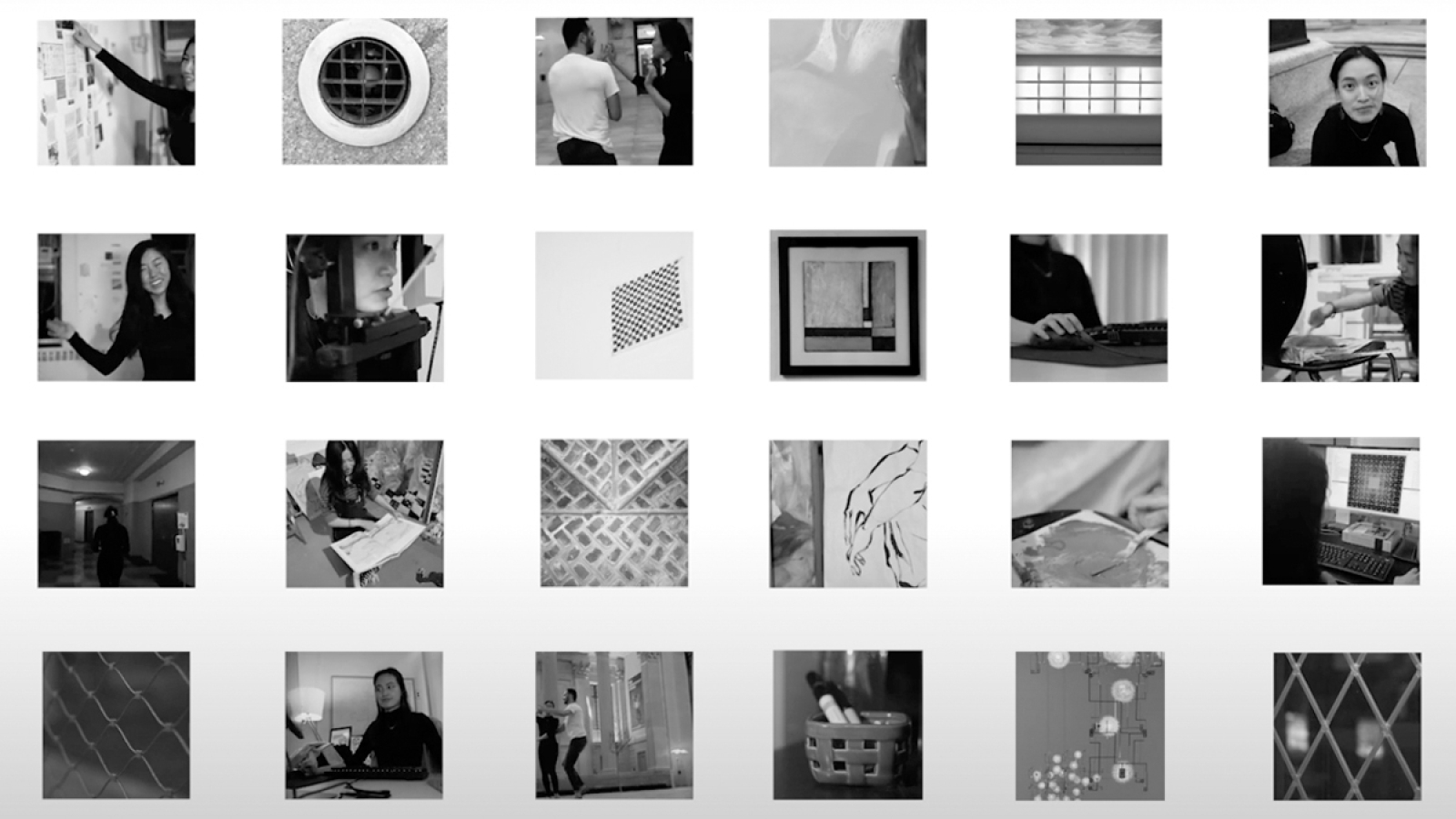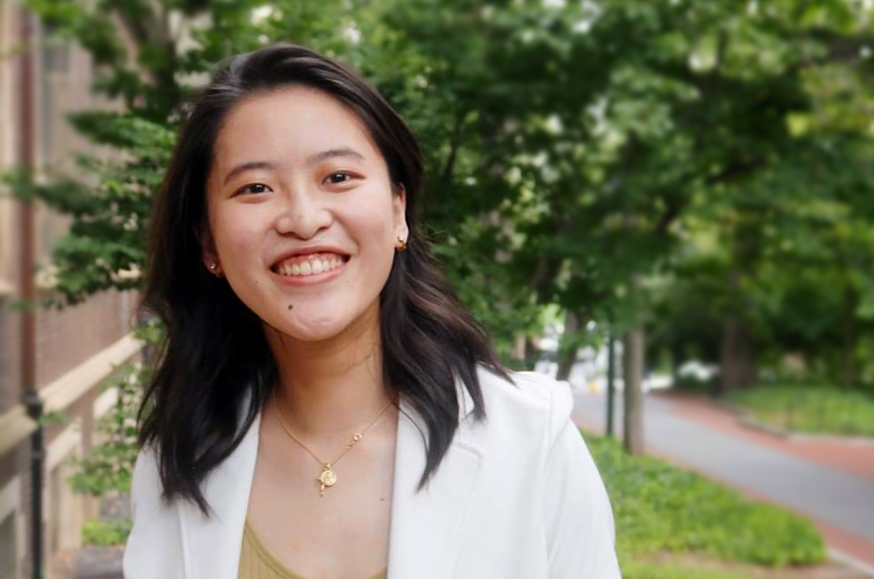Words, Film, and Your Brain
Julia Ongchoco, C’23, is studying the difference a word can make—and making films to share her excitement about cognitive sciences.

What’s a cognitive sciences major interning at a film production company to do when people keep asking what cognitive sciences are? If you’re Julia Ongchoco, you make a movie to share your excitement. The film, which explores connections between cognitive sciences and art, was part of Ongchoco’s own journey of discovering how the ways we think and understand undergird our lives.
Ongchoco came to Penn from Manila, Philippines, fascinated by language and stories. She knew little about cognitive science but realized it would give her the flexibility to explore many of the things that interested her. “The interdisciplinary-ness of it was super appealing,” she says.
“Each” and “Every”
As Ongchoco began her coursework, she focused in on the intersection of linguistics and psychology, “how language can shape our representations of the world, how we acquire language,” she says.
She also took classes in theatre studies, which eventually became her minor. She had performed in high school, but this was her first chance to examine theatre academically. She found that these courses were considering the same kinds of things as her cognitive science classes, “but in a more abstract way, a more human side, like the subtext of a script, how that can affect how a story is told.”
A seminar with Professor of Linguistics Anna Papafragou explored the direct intersection of language and psychology, as well as the ways language affects how we think. As Ongchoco was considering her final project, she met Tyler Knowlton, a postdoc in Papafragou’s Language and Cognition Lab, during a get-together sponsored by Penn’s MindCORE, an initiative that brings together researchers across the university studying human intelligence and behavior. Knowlton is studying the different reactions to the words “each” and “every,” and whether they prompt people to think of individual difference versus collectively.
“When I say ‘each glass,’ you’re thinking of each individual glass,” Ongchoco explains. “‘Each’ leads you into an individuation, while when I say ‘every glass,’ you think of them as an ensemble, as a group. I thought that was so powerful. People use ‘each’ and ‘every’ interchangeably all the time. The fact that there’s a difference between the two in how we represent things, that was incredible to me,” she says. “But I was really interested in the concept of how we represent things in time.”
For her class project, Ongchoco began to develop a version of Knowlton’s experiment that includes the element of time, then continued to work in Papafragou’s lab, making it her senior thesis. “There were only one or two other papers that explored something similar to what we were doing, and this was the first time it was being done with the paradigm of sound,” Ongchoco says. “A lot of it was trying to figure out how to create those experiments and build on this hypothetical that I proposed, piloting and refining.”
I was really interested in the concept of how we represent things in time.
During the experiment itself, participants heard a series of three tones. Ongchoco then played a single tone and asked whether it was a repetition of one of the initial tones. Sometimes it was, but sometimes it was an average of the previous frequencies.
“If I would say, ‘Every sound is pleasant,’ more often than not you might think that this average sound was a part of the set when it actually wasn’t. Versus when I say, ‘Each sound is pleasant,’ you’re individuating, so you’re more likely to be like, ‘Wait, that wasn’t a part of that set at all,’” she says. “That’s exactly what we found.”
Ongchoco wants to continue to explore this: “Our next question is, are people actually thinking individually and ‘every’ is impairing that, or are they thinking about an ensemble and ‘each’ is impairing that? We are now developing other experiments to examine that.” She will present a poster at the 2023 Conference of the Cognitive Science Society in Sydney at the end of July, and the researchers are writing up the new experiments for journal publication.
Grids on Film
During her junior year, Ongchoco took a course on documentary video with Fine Arts Lecturer Michael Crane. “This was an elective; it didn’t count for anything in cog sci or theatre,” she says. “Penn’s cool, because you get to have these electives and take a class that’s out of your realm.”
She was excited about exploring film academically as she had with theatre. The course led to work as a student production assistant for a documentary filming in Philadelphia. “After those three days, I went home and I called my family and said, ‘I think I really want to do film.’”
While she was a summer intern at Library Films in New York, people kept asking Ongchoco what cognitive sciences were and what they had to do with film. It was frustrating to her. “There’s so much cool work being done, but no one knows about it,” she explains. “I tell people about the stuff I study, and they’re like, ‘Oh, my gosh, that’s so cool.’ I want people to know more about this.”
At the time, Ongchoco’s sister, Joan Danielle Ongchoco, who also studies cognitive science, was completing her Ph.D. at Yale. Ongchoco decided to do a short film about her sister’s research on scaffolded attention, the phenomenon in which, when people stare at a blank grid of squares long enough, they may begin to perceive more complex shapes and patterns. The grid serves as the scaffold for what non-scientists call our imagination.
Ongchoco applied for and was awarded a grant supporting her work on the film from the Sachs Program for Arts Innovation, which provides funding to faculty, staff, students, departments, programs, and centers to support the arts at Penn. When she mentioned the project on Instagram, fine arts major Cynthia Zhou, C’23, messaged Ongchoco about her own fascination with grids. The undergrads started talking, and Zhou mentioned artist Agnes Martin, who features grids in her work. Ongchoco then found out that her sister also loves the artist and uses Martin’s work to introduce her research at conferences.
“It became about this intersection of cognitive science and art, and proving to all the naysayers that this intersection exists,” says Ongchoco.
Bringing it all Together
This spring, she screened her short film for a mix of “cog sci people” and others and got the reaction she’d hoped for: “People were actually invested in grids by the end of it,” she says.
Ongchoco, who graduated in May, is back as an intern at Library Films this summer. She’s also planning two more short films about how art and cognitive science intersect; she’s hoping eventually to present them as a series.
“There’s a lot out there that talks about scientific concepts and relates them to everyday life,” says Ongchoco, who won the Phi Beta Kappa thesis award and the Robert J. Glushko Outstanding Undergraduate Award in Cognitive Science for her work. “But I think there’s not a lot that explores more contemporary stuff, because people don’t know it. And that’s such a waste because it’s relevant to so many people. So, that’s what I want to really focus on right now, and explore more with film so it reaches broader audiences in a way that hasn’t been done before.”
Header image: A still from Grid, a film by Julia Ongchoco, C'23, that explores connections between cognitive science and art. (Image: Courtesy Julia Ongchoco)




